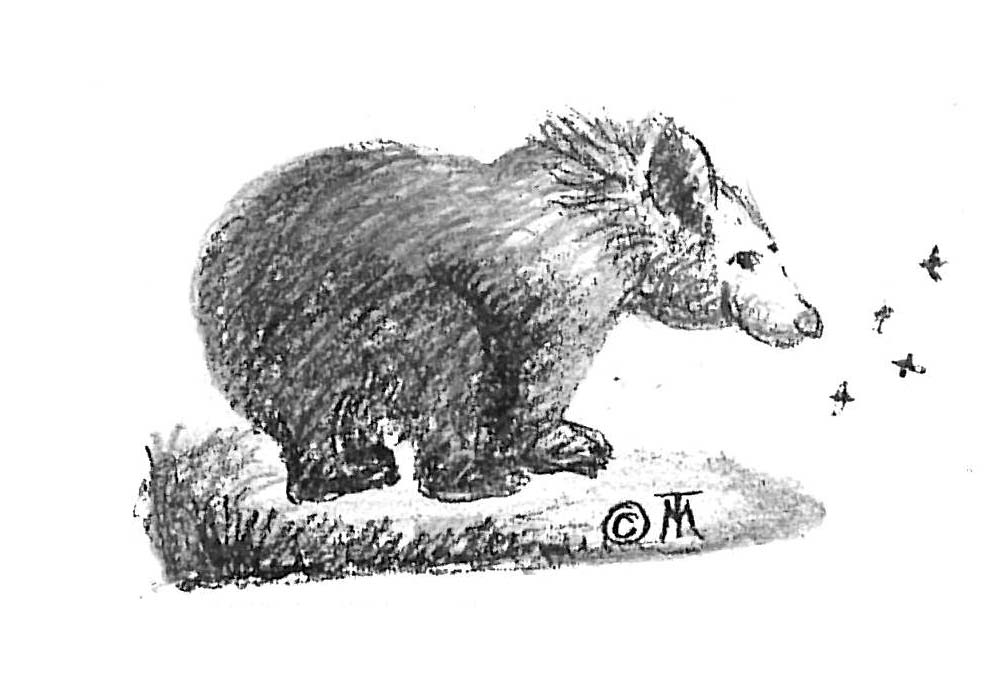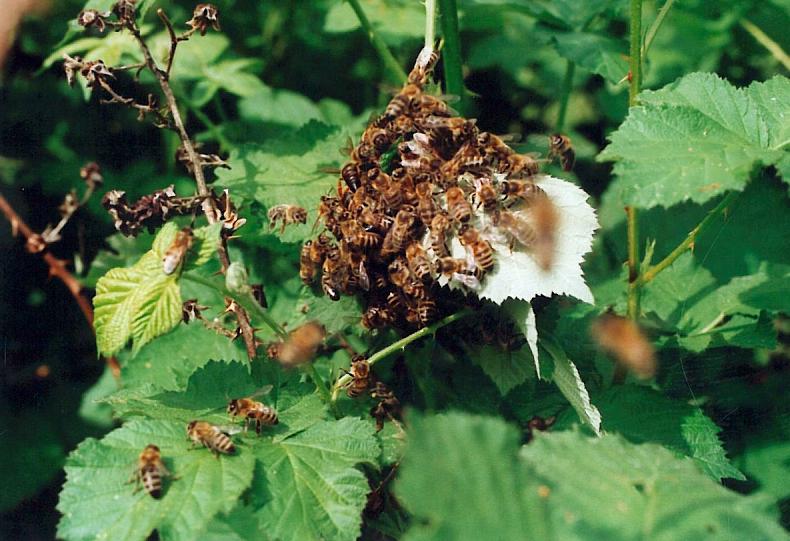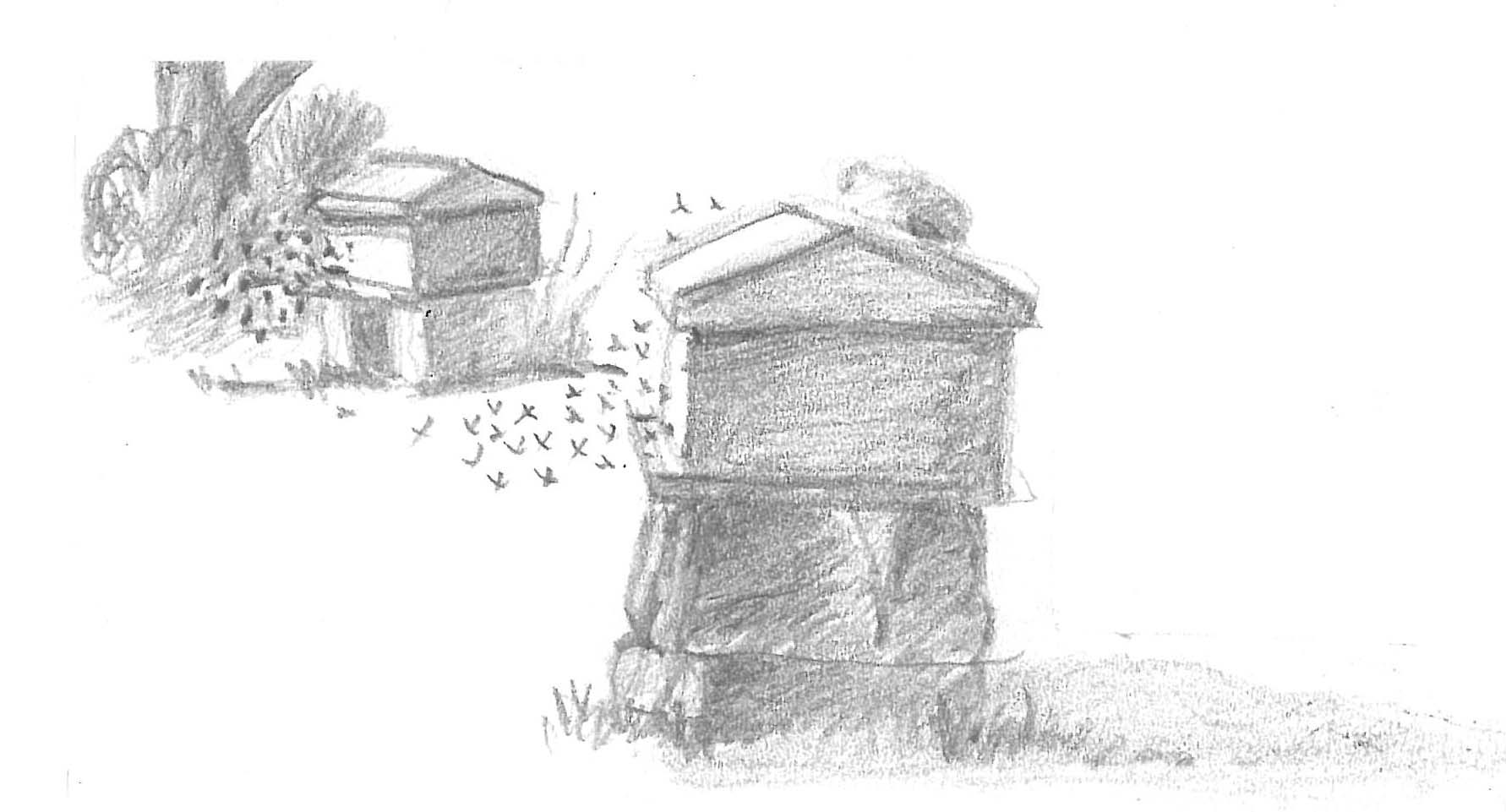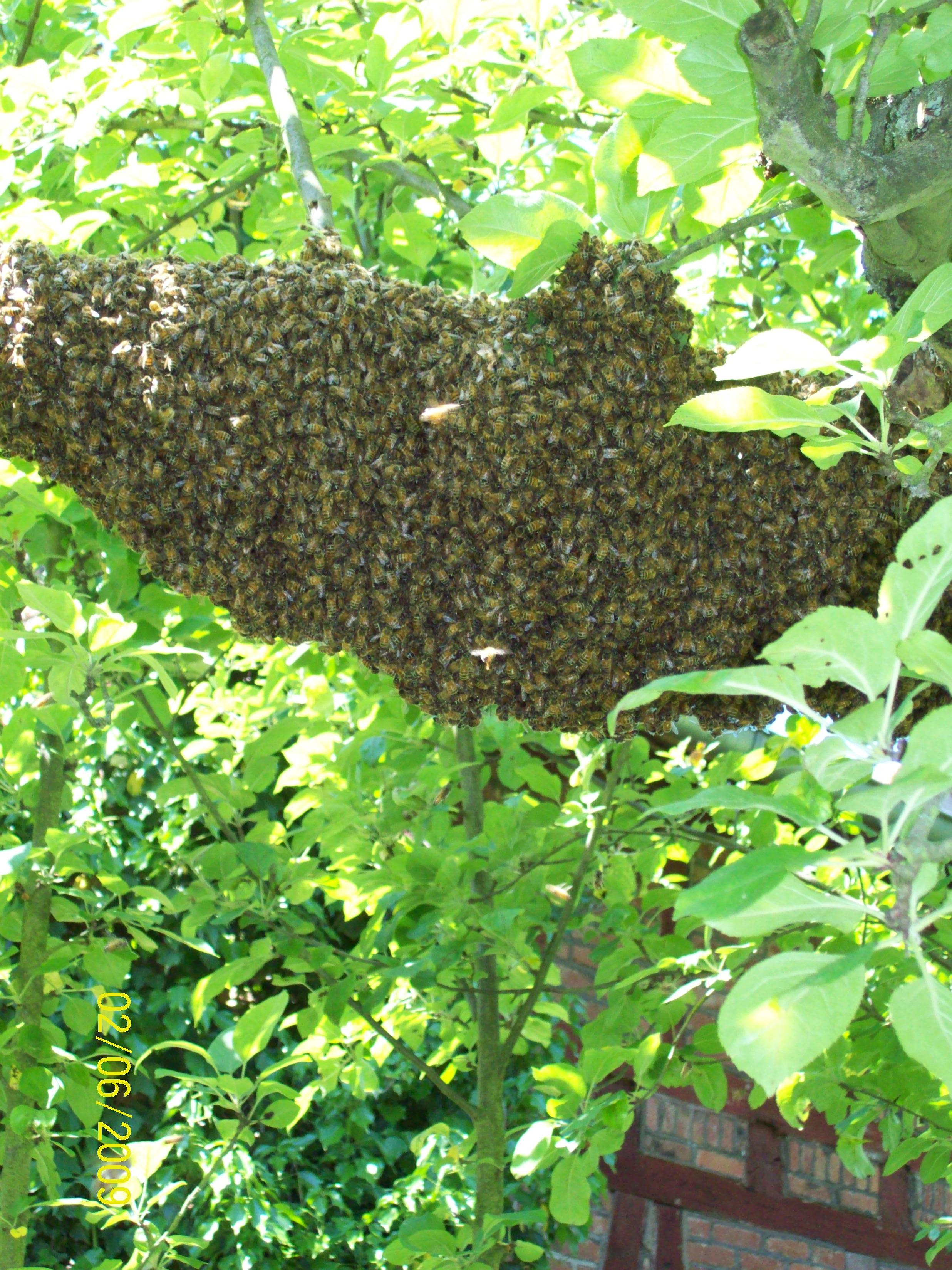
Centre
for Social Medicine and natural Apitherapy
Natural
Apitherapy Research Centre

Medical
doctors | apitherapists | non-medical practitioners | beekeepers of the
Centre
for Ecological Apiculture |
Impressum
DI. Michael
Thiele, international coordinator of the Centre
for Natural Bee Therapy / Apitherapy
Health
supporting antioxidants as they can be found in natural beeproduce like
propolis, pollen, comb in the comb together with beebread and run honey
 In
this letter we’ll focus on the issue of health supporting antioxidants
as they can found in pollen, especially fresh pollen and beebread together
with comb honey.
In
this letter we’ll focus on the issue of health supporting antioxidants
as they can found in pollen, especially fresh pollen and beebread together
with comb honey.
The antioxydative
effect of pollen is responsible for the anti-cancerogene effect, anti-arteriosklerosis,
alzheimer, cataract, anti-aging. On top of that the antioxydative effect
of pollen is able to give relief regarding the following chronic diseases:
cancer, alzheimer, diabetes. Consumation of pollen is working also against
prostatitis (Apicultural Review Letters 2006, Vol. 5, Nr. 75).
But how does it work
according recent scientific research? What are antioxidants doing? An interesting
view on this topic has been carried out by several scientists, last but
not least by Dr. Jack Pfeifer. Thus let’s listen to latest scientific research
on the Oxygen-Free Radical: A Threat to Life and Health as well as protection
by antioxidants:
„Normal oxygen molecules
have paired electrons in orbit around a proton nucleus. During metabolism,
2 percent of the oxygen molecules lose an orbiting electron and are left
with a single unpaired electron. This is an unstable state in nature. This
resulting oxygen molecule is called an oxygen-free radical. To stabilize
itself, the free radical will capture an electron from an adjacent molecule.
However, this molecule will then become a new free radical, and it will
repeat the process. We now have a chain reaction in the body.
The effect of these
rapid electron transfers is called oxidation. It's the same process that
makes nails rusty and apple slices turn brown. Bruce Ames, a noted antioxidant
scientist, states that a single oxygen-free radical will create 3,000 new
free radicals.
The mathematics of
this free radical chain reaction is incredible. Do the math -one trillion
molecules of oxygen go through each cell every day. We know that 2 percent
of them will be converted to oxygen-free radicals, or 20 billion per cell
each day. If each free radical creates 3,000 new free radicals (a process
called biological magnification) the grand total loosed in the body can
be as high as 60 trillion free radicals per cell per day. Ames also calculates
that there are 100,000 free radical hits per day, directly on the cell
nucleus, genes, and DNA (the programmer of life).
Passwater states
that not only do free radicals rob normal molecules of electrons, they
also destroy key enzymes, protein molecules, and even entire cells. Remember,
the more of your cells that die each day, the sooner you die.
The body tries to
neutralize these hits with antioxidant enzymes, which can repair 99 percent
to 99.9 percent of the damage, leaving 1,000 points of damage per cell
per day that are not repaired. This damage accumulates relentlessly. By
the time you're 50, there are a few million oxygen-free radical lesions
per cell. Thirty percent of your cellular protein has been damaged and
has been turned into "rusty junk."
It is this cumulative
damage that makes us age prematurely and acquire disease. Eighty to 90
percent of the diseases of mankind are due to free racial damage. Carper
has stated that as we age, our defense against oxidation (free radical
attack) is less and less, and damage to cells accumulates even more rapidly."
(1-6)
However, it’s a kind
of theory and reality looks even more complicated, especially if spiritual
aspects (aetherical body, astral body, organisation of the I) are being
included. Anyway scientists have found a way to describe how Antioxidants
work. Let’s carry on listening:
„The classic definition
of a vitamin is a compound that the body needs in trace quantities to maintain
life, but which the body can't make. Thus, we must obtain this compound
in our diets as a constituent of food. However, this definition has been
modified to adapt to new data regarding the role of vitamins in the body:
Vitamins are not a single group of chemicals, but a mixed group of chemical
compounds having similar functions. Vitamins are not inorganic minerals,
but organic constituents of food. The word 'organic' denotes complex compounds
based on molecules of carbon, as are many of the compounds of life in living
organisms.
Part of this change
in our view of the role of vitamins has resulted from scientific data suggesting
that a vitamin's dose plays a role in whether the vitamin acts as a simple
food additive or as a life-saving antioxidant.
How Antioxidants
Protect the Body: Packer has pointed out that there are literally hundreds
of antioxidants. Some are naturally occurring and produced by the body.
We obtain others from food or supplements. Cellular damage in the body
results from free radical damage, which, in turn, contributes to many degenerative
diseases including cancer, heart disease, arthritis, cataracts and allergies,
as well as the acceleration of aging.
The mechanisms by
which free radicals are destroyed or neutralized are as follows. Oxygen
molecules are made up of pairs of electrons in orbit around a proton nucleus.
During the process of metabolism, 2 percent of oxygen molecules lose an
electron from their normal orbit. The remaining electron is unstable in
nature and immediately moves to attach an electron from a nearby molecule.
This molecule does the same and attaches an electron from another nearby
molecule in the same way, thus setting up a chain reaction involving 3,000
djacent molecules.
Halliwell and Gutteridge,
in their text, "Free Radicals in Biology and Medicine," define a free radical
in scientific terms: "… A free radical is any species capable of independent
existence that contains one or more unpaired electrons. An unpaired electron
is one that occupies an atomic or molecular orbital (orbit) by itself.
… The presence of one or more unpaired electrons causes the species to
be attracted to a magnetic field and sometimes makes the species highly
reactive." Antioxidant molecules can donate the necessary electron to stabilize
free radicals without becoming a new free radical.
Lester Packer, Ph.D.,
the world's foremost antioxidant research scientist, describes the steps
in this process of neutralizing free radicals: "When an antioxidant encounters
a free radical, it engulfs it, and the free radical then joins its molecular
structure. The antioxidant itself becomes a free radical. These newly created
free radicals are relatively weak and are not likely to do further harm.
Therefore, you are sparing your cells and tissues from the destructive
path of a free radical, out of control."
The observation has
been made that multiple antioxidants working together are usually more
effective than a higher dose of a single antioxidant. Packer gives an example
of how some antioxidants work together: "When vitamin E disarms a free
radical, it becomes a weak free radical itself. But unlike the "bad" free
radicals, the vitamin E radical can be recycled, or turned back into an
antioxidant by other antioxidants, specifically vitamin C and coenzyme
Q10. These antioxidants will donate electrons to vitamin E, bringing it
back to its antioxidant state."
Packer describes
a group of antioxidants that he calls network antioxidants, whose primary
job is to work in synergy to prevent antioxidants from being lost through
oxidation. The effect of antioxidants is to prevent the damage of countless
billions of free radicals before they can damage the individual cells of
the body." (7-10).
Famous for their
high content of antioxidants are natural beeproduce, especially pollen,
comb in the comb and propolis. Antioxidants in beeproduce are only effective
if the products are not being denaturated by heat treatment and wrong beekeeping
methods.
The Centre for natural
Api-Therapy is working together with the Centre for Ecological Apiculture
in Germany and its certified apiaries and offers fresh pollen, propolis,
run-honey, comb in the comb and the speziality comb in the comb + beebread
+ run-honey.
____________________________
1.
Feinstein, A. Editor, Prevention: Dealing with Vitamins, Prevention Magazine.
2.
Ames, BN, Oxidants, Antioxidants, and the Degenerative Diseases of Aging,
Proceedings of the Nation Academy of Sciences, pp 7915-22, 90(17),1993.
3.
Carper, J., Stop Aging Now, New York, Harper & Collins, 1995.
4.
Passwater, RA, PH.D., Mindell, E., The New Super Antioxidants Plus, New
Canann, Keats Publishing, 1992.
5.
Pryor, W., Free Radicals, New York, McGraw-Hill Publishers, 1966.
6.
Packer, L. Ph.D., Colman, C., The Antioxidant Miracle, New York, John Wiley
& Sons Inc., 1999.
7.
Passwater R., Ph.D., Mindell E., Ph.D., Vitamins, New Canaan, Conn., Keats
Publishing Inc., 1983.
8.
Passwater R., Ph.D., Mindell E., Ph.D., The Antioxidants, New Canaan, Conn.,
Keats Publishing Inc., 1985.
9.
Halliwell B., Gutteridge JMC, Free Radicals in Biology and Medicine, Oxford,
Oxford University Press, 1989.
10.
Packer L., Ph.D., Colman C., The Antioxidant Miracle, New York, John Wiley
& Sons, 1999.
11.
Thiele, M. / Centre for social Medicine and natural Apitherapy: Apicultural
Review Letters 2002-2022.
Further
reading and references:
Online-Magazines:recently
published scientific research and practical advices on this topic can be
found in Science
Review Letters and Apicultural
Review Letters
as
well as at the Centre
for Natural Bee Therapy / Apitherapy




Sign
up for bee-therapy | Beauty-cure
| Anti-aging
| Infertility
| Immunesystem
| Hashimoto-Thyreoiditis
|
Crohn's disease
Rheumatism
| Juvenile idiopathic
arthritis | Heart
diseases | Arteriosklerosis
| MS |
Diabetes
| Neurodermitis
| Obesity |
Depression
and Psychosis
Allergies
| Alzheimer
/ Parkinson | Diseases
of the kidneys | Pancreas
| how
to improve fitness of the body
Propolis
| Beeswax | Royal
Jelly | Organic Honey
| Comb in the Comb
| Raw Honey | Organic
Beekeeping Basic Course
Expertise
| Courses | Home
| Research | Save
Beecolonies-Bienenpatenschaft | Certification
| Training
Apitherapy
Api
Review Letters / Science Review Letters
Akademie
der Kunst und Philosophie / Academy of Arts and Philosophy
Save
the Bees, Bumblebees and Beecolonies
Zentrum
fuer wesensgemaesse Bienenhaltung
Centre
for Ecological Apiculture
Forschungszentrum
Bienentherapie / Natural Apitherapy Research Centre
Beetherapy
/ Academy of Sciences
DI.
M. Thiele, President and international Coordinator
Copyright
© 2002-2025: Centre for Ecological
Apiculture | Natural
Apitherapy Research Centre

